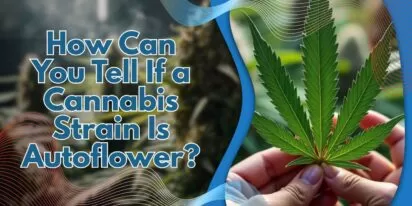Table of Contents

Table of Contents
The story starts with five students from San Rafael, California, calling themselves “the Waldos.” In 1971, they heard about a treasure map leading to hidden cannabis, supposedly left by a Coast Guard member. Every day at 4:20 p.m., after school, they met at the Louis Pasteur statue to search for the treasure. Despite their efforts, they never found it. However, their routine of meeting at 4:20 became a cultural phenomenon, giving birth to “420.”
The tale begins with a group of high school students from San Rafael, California, who named themselves “the Waldos.” In the autumn of 1971, they set out on a journey fueled by curiosity and the desire for adventure. They had stumbled upon a treasure map said to lead to a secret stash of cannabis abandoned by a Coast Guard member. At 4:20 p.m. every day, after school, the Waldos gathered at the Louis Pasteur statue to pursue the elusive treasure. Despite their persistent efforts, the treasure remained out of reach. Nevertheless, their daily ritual at 4:20 p.m. eventually gave rise to the cultural phenomenon known as “420.”
The journey of 420 from a local story to a worldwide sensation took an unexpected twist thanks to the influence of the iconic band, the Grateful Dead. The Waldos, connected to the Dead’s inner circle, played a crucial role in spreading the term within the counterculture community.
In 1990, during a Grateful Dead concert in Oakland, California, journalist Steven Bloom encountered 420 firsthand. A flyer distributed among Deadheads encouraged people to gather at 4:20 on April 20th, honoring the Waldos and solidifying the link between 420 and cannabis culture.
The path of 420 from a local tale to a global phenomenon took an interesting turn because of the Grateful Dead’s influence. The Waldos, who had connections to the band, helped popularize the term within the counterculture scene.
In 1990, at a Grateful Dead concert in Oakland, California, journalist Steven Bloom came across 420. A flyer passed around among Deadheads urged fans to assemble at 4:20 on April 20th, acknowledging the Waldos and cementing the connection between 420 and the cannabis community.
Sparked by the push for cannabis legalization and increased media attention, the idea of 420 moved beyond its roots in the counterculture, reaching a wider audience. High Times magazine played a key role in spreading the story of the Waldos, helping to spread 420 worldwide and firmly establishing it as a significant cultural symbol.
The adoption of 420 as an unofficial holiday further cemented its position in popular culture, with gatherings and festivities held globally every April 20th. Despite efforts by certain institutions, like the University of Colorado and the University of California, Santa Cruz, to discourage its celebration, 420 persisted as a symbol of support for cannabis and unity within communities.
Even years after their adventures, the Waldos still hold onto a special place in cannabis culture, preserving a legacy that’s deeply woven into its fabric. Their collection of 420 memorabilia and letters serves as tangible evidence of their significant role in creating a cultural phenomenon.
Looking forward, the legacy of 420 continues to thrive, opening up possibilities for documentaries or compilations that delve into the Waldos’ story. No matter which path they take, their impact on cannabis culture is undeniable, showing how friendship and curiosity can spark movements that endure through time.
Q: What are some common misconceptions about the origins of “420”?
A: One common misconception is that “420” refers to the number of chemicals in marijuana, but it originated from a group of high school students in California.
Q: Did the Waldos ever find the hidden cannabis crop they were searching for?
A: No, despite their efforts, the Waldos never located the elusive cannabis treasure mentioned in the treasure map they received.
Q: How did the term “420” become associated with cannabis culture?
A: The term “420” became associated with cannabis culture through the influence of the Grateful Dead and the widespread adoption of the term among enthusiasts and countercultural communities.
Q: Are there any efforts to stop the celebration of 420?
A: Yes, some institutions, such as universities, have attempted to discourage participation in 420 celebrations, but these efforts have generally been unsuccessful.
Q: What artifacts serve as reminders of the Waldos’ role in popularizing “420”?
A: Artifacts such as original 420 memorabilia and correspondence kept by the Waldos serve as tangible reminders of their pivotal role in popularizing the term.

Curious about growing weed in a healthy, effective way? Welcome to the realm of weed hydro! This method uses water instead of soil, delivering n

Peyote Zkittlez is a unique cannabis strain that has quickly gained dedicated followers among enthusiasts and patients alike. Its parentage—Zk

As growers, we want strains that work well, are strong, and are of good quality. Autoflowering cannabis strains are a big step forward for both

Pot growers always ask the same basic question: How much weed does a weed plant produce? The answer is complex and depends on a multitude of var

Ever had the room spin after a few hits? You're not alone. Figuring out how to prevent getting dizzy high can make your cannabis experience a wh

Drying cannabis properly is a critical process in preserving the plant's full aroma and flavor and its psychoactive abilities. Tampering with th

Ever caught yourself a bit too high and all of a sudden in need of being normal? Whether you're heading out for munchies or bumping into someone

Looking for sage advice on how not to get pinched with weed without batting an eye? Attempting to protect your stash from gossipy roommates, sno

Nutrient lockout, also known as nutrient binding or chemical antagonism, is a significant issue in cannabis cultivation that negatively impacts

Germination is the most critical initial stage in growing healthy, high-quality cannabis plants. During germination, the dormant seed becomes a
Are You 18 Or Over?
By selecting “Continue”, you confirm that you are at least 18 years of age and legally permitted to access cannabis related content in your region.
By using Rocketseeds.com, you agree to our legal disclaimer.
Excellent blog here Also your website loads up very fast What web host are you using Can I get your affiliate link to your host I wish my web site loaded up as quickly as yours lol
Your writing is not only informative but also incredibly inspiring. You have a knack for sparking curiosity and encouraging critical thinking. Thank you for being such a positive influence!
Simply wish to say your article is as amazing The clearness in your post is just nice and i could assume youre an expert on this subject Well with your permission let me to grab your feed to keep updated with forthcoming post Thanks a million and please carry on the gratifying work
Somebody essentially lend a hand to make significantly articles Id state That is the very first time I frequented your website page and up to now I surprised with the research you made to make this actual submit amazing Wonderful task
Your blog is a beacon of light in the often murky waters of online content. Your thoughtful analysis and insightful commentary never fail to leave a lasting impression. Keep up the amazing work!
Thank you for the auspicious writeup It in fact was a amusement account it Look advanced to more added agreeable from you By the way how could we communicate
Your blog is a constant source of inspiration for me. Your passion for your subject matter shines through in every post, and it’s clear that you genuinely care about making a positive impact on your readers.
Your blog is a constant source of inspiration for me. Your passion for your subject matter is palpable, and it’s clear that you pour your heart and soul into every post. Keep up the incredible work!
Your articles never fail to captivate me. Each one is a testament to your expertise and dedication to your craft. Thank you for sharing your wisdom with the world.
Your blog is a testament to your dedication to your craft. Your commitment to excellence is evident in every aspect of your writing. Thank you for being such a positive influence in the online community.
Your writing has a way of resonating with me on a deep level. I appreciate the honesty and authenticity you bring to every post. Thank you for sharing your journey with us.
Your blog is a true gem in the world of online content. I’m continually impressed by the depth of your research and the clarity of your writing. Thank you for sharing your wisdom with us.
Hi i think that i saw you visited my web site thus i came to Return the favore Im attempting to find things to enhance my siteI suppose its ok to use a few of your ideas
Somebody essentially help to make significantly articles Id state This is the first time I frequented your web page and up to now I surprised with the research you made to make this actual post incredible Fantastic job
Usually I do not read article on blogs however I would like to say that this writeup very compelled me to take a look at and do so Your writing taste has been amazed me Thanks quite nice post
Your blog has quickly become one of my favorites. Your writing is both insightful and thought-provoking, and I always come away from your posts feeling inspired. Keep up the phenomenal work!
Every time I visit your website, I’m greeted with thought-provoking content and impeccable writing. You truly have a gift for articulating complex ideas in a clear and engaging manner.
Hey there You have done a fantastic job I will certainly digg it and personally recommend to my friends Im confident theyll be benefited from this site
I have read some excellent stuff here Definitely value bookmarking for revisiting I wonder how much effort you put to make the sort of excellent informative website
Nice blog here Also your site loads up very fast What host are you using Can I get your affiliate link to your host I wish my site loaded up as quickly as yours lol
What i do not understood is in truth how you are not actually a lot more smartlyliked than you may be now You are very intelligent You realize therefore significantly in the case of this topic produced me individually imagine it from numerous numerous angles Its like men and women dont seem to be fascinated until it is one thing to do with Woman gaga Your own stuffs nice All the time care for it up
Your blog is a beacon of light in the often murky waters of online content. Your thoughtful analysis and insightful commentary never fail to leave a lasting impression. Keep up the amazing work!
Your blog is a breath of fresh air in the often stagnant world of online content. Your thoughtful analysis and insightful commentary never fail to leave a lasting impression. Thank you for sharing your wisdom with us.
Your blog is a beacon of light in the often murky waters of online content. Your thoughtful analysis and insightful commentary never fail to leave a lasting impression. Keep up the amazing work!
Usually I do not read article on blogs however I would like to say that this writeup very compelled me to take a look at and do it Your writing style has been amazed me Thank you very nice article
Your writing has a way of resonating with me on a deep level. I appreciate the honesty and authenticity you bring to every post. Thank you for sharing your journey with us.
This hydroponics guide is quite the buzz, seriously! Who knew growing weed without dirt could be so complicated yet potentially rewarding? The breakdown of systems like DWC and NFT is helpful, though I suspect my cat might confuse the air pump for a toy. The idea of cleaner buds is tempting, especially since explaining hydro weed to my non-growing friends might get messy. And the bit about potential dizziness from hydro weed? Perfect, now I have an excuse for why I always stumble a bit after a grow session. Still, the promise of faster grows and higher yields is hard to ignore, even if it means more trips to the pH meter than to the coffee shop. Overall, a cultivating read for the curious grower!